
Richard Nathaniel Wright was an American author of novels, short stories, poems, and non-fiction. Much of his literature concerns racial themes, especially related to the plight of African Americans during the late 19th to mid 20th centuries suffering discrimination and violence. His best known works include the novella collection Uncle Tom's Children (1938), the novel Native Son (1940), and the memoir Black Boy (1945). Literary critics believe his work helped change race relations in the United States in the mid-20th century.
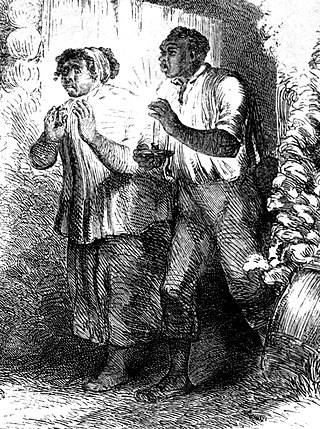
Uncle Tom is the title character of Harriet Beecher Stowe's 1852 novel Uncle Tom's Cabin. The character was seen by many readers as a ground-breaking humanistic portrayal of a slave, one who uses nonresistance and gives his life to protect others who have escaped from slavery. However, the character also came to be seen as inexplicably kind to white slaveholders, especially based on his portrayal in pro-compassion dramatizations. This led to the use of Uncle Tom – sometimes shortened to just a Tom – as a derogatory epithet for an exceedingly subservient person or house negro, particularly one aware of his or her own lower-class racial status.

Native Son (1940) is a novel written by the American author Richard Wright. It tells the story of 20-year-old Bigger Thomas, a black youth living in utter poverty in a poor area on Chicago's South Side in the 1930s. Thomas accidentally kills a white woman at a time when racism is at its peak and he pays the price for it.

James Arthur Baldwin was an American writer and civil rights activist who garnered acclaim for his essays, novels, plays, and poems. His 1953 novel Go Tell It on the Mountain has been ranked among the best English-language novels. His 1955 essay collection Notes of a Native Son helped establish his reputation as a voice for human equality. Baldwin was a well-known public figure and orator, especially during the civil rights movement in the United States.
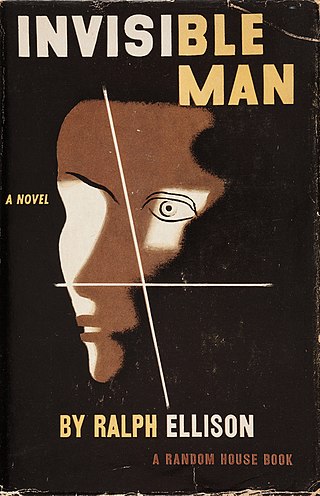
Invisible Man is Ralph Ellison's first novel, the only one published during his lifetime. It was published by Random House in 1952, and addresses many of the social and intellectual issues faced by African Americans in the early 20th century, including black nationalism, the relationship between black identity and Marxism, and the reformist racial policies of Booker T. Washington, as well as issues of individuality and personal identity.
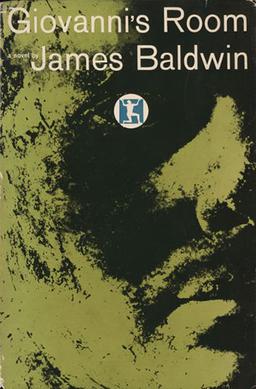
Giovanni's Room is a 1956 novel by James Baldwin. The book focuses on the events in the life of an American man living in Paris and his feelings and frustrations with his relationships with other men in his life, particularly an Italian bartender named Giovanni whom he meets at a Parisian gay bar.
African American literature is the body of literature produced in the United States by writers of African descent. It begins with the works of such late 18th-century writers as Phillis Wheatley. Before the high point of enslaved people narratives, African American literature was dominated by autobiographical spiritual narratives. The genre known as slave narratives in the 19th century were accounts by people who had generally escaped from slavery, about their journeys to freedom and ways they claimed their lives. The Harlem Renaissance of the 1920s was a great period of flowering in literature and the arts, influenced both by writers who came North in the Great Migration and those who were immigrants from Jamaica and other Caribbean islands. African American writers have been recognized by the highest awards, including the Nobel Prize given to Toni Morrison in 1993. Among the themes and issues explored in this literature are the role of African Americans within the larger American society, African American culture, racism, slavery, and social equality. African-American writing has tended to incorporate oral forms, such as spirituals, sermons, gospel music, blues, or rap.
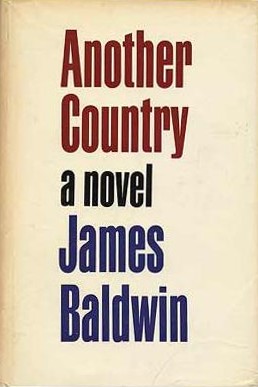
Another Country is a 1962 novel by James Baldwin. The novel is primarily set in Greenwich Village, Harlem, and France in the late 1950s. It portrayed many themes that were taboo at the time of its release, including bisexuality, interracial couples, and extramarital affairs.

The Fire Next Time is a 1963 non-fiction book by James Baldwin, containing two essays: "My Dungeon Shook: Letter to my Nephew on the One Hundredth Anniversary of the Emancipation" and "Down at the Cross: Letter from a Region of My Mind".

Notes of a Native Son is a collection of ten essays by James Baldwin, published in 1955, mostly tackling issues of race in America and Europe.
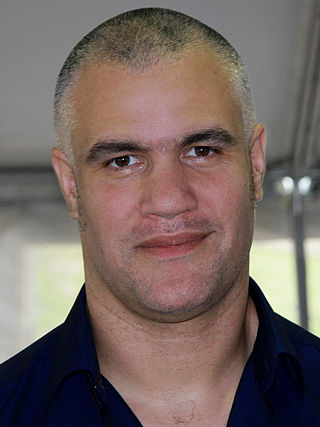
Mat Johnson is an American fiction writer who works in both prose and the comics format. In 2007, he was named the first USA James Baldwin Fellow by United States Artists.

The White Negro: Superficial Reflections on the Hipster is a 9,000-word essay by Norman Mailer that connects the "psychic havoc" wrought by the Holocaust and atomic bomb to the aftermath of slavery in America in the figuration of the Hipster, or the "white negro". The essay is a call to abandon Eisenhower liberalism and a numbing culture of conformity and psychoanalysis in favor of the rebelliousness, personal violence and emancipating sexuality that Mailer associates with marginalized black culture. The White Negro was first published in the 1957 special issue of Dissent, before being published separately by City Lights. Mailer's essay was controversial upon its release and received a mixed reception, winning praise, for example, from Eldridge Cleaver and criticism from James Baldwin, Ralph Ellison, and Allen Ginsberg. Baldwin, in particular, heavily criticized the work, asserting that it perpetuated the notorious "myth of the sexuality of Negros" and stating that it was beneath Mailer's talents. The work remains his most famous and most reprinted essay and it established Mailer's reputation as a "philosopher of hip".

"Stranger in the Village" is an essay by African-American novelist James Baldwin about his experiences in Leukerbad, Switzerland, after he nearly suffered a breakdown. The essay was originally published in Harper's Magazine, October 1953, and later in his 1955 collection, Notes of a Native Son.
Revolutionary Integrationism is an analysis, philosophy, and program for resolving the "black question"—the problem of the oppression of blacks, and their liberation—in the United States.
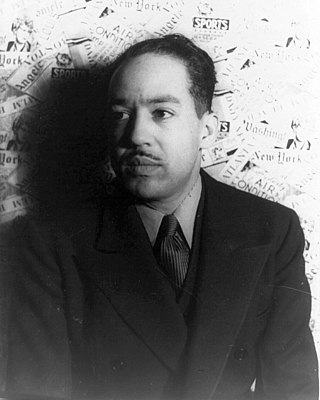
James Mercer Langston Hughes was an American poet, social activist, novelist, playwright, and columnist from Joplin, Missouri. One of the earliest innovators of the literary art form called jazz poetry, Hughes is best known as a leader of the Harlem Renaissance. He famously wrote about the period that "the Negro was in vogue", which was later paraphrased as "when Harlem was in vogue."
A race riot took place in Harlem, New York City, on August 1 and 2 of 1943, after a white police officer, James Collins, shot and wounded Robert Bandy, an African American soldier; and rumors circulated that the soldier had been killed. The riot was chiefly directed by Black residents against white-owned property in Harlem. It was one of five riots in the nation that year related to Black and white tensions during World War II. The others took place in Detroit; Beaumont, Texas; Mobile, Alabama; and Los Angeles.

Nobody Knows My Name: More Notes of a Native Son is a collection of essays, published by Dial Press in July 1961, by American author James Baldwin. Like Baldwin's first collection, Notes of a Native Son, it includes revised versions of several of his previously published essays, as well as new material.

I Am Not Your Negro is a 2016 German-American documentary film and social critique film essay directed by Raoul Peck, based on James Baldwin's unfinished manuscript Remember This House. Narrated by actor Samuel L. Jackson, the film explores the history of racism in the United States through Baldwin's recollections of civil rights leaders Medgar Evers, Malcolm X and Martin Luther King Jr., as well as his personal observations of American history. It was nominated for Best Documentary Feature at the 89th Academy Awards and won the BAFTA Award for Best Documentary.
"Negroes Are Anti-Semitic Because They're Anti-White" was a landmark 1967 essay written by American writer James Baldwin that first appeared in the Sunday magazine edition of The New York Times, describing the tensions that existed in African American–Jewish relations.
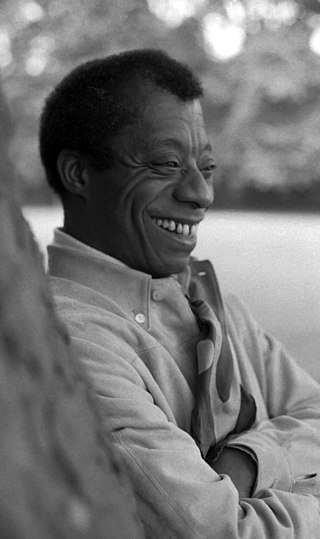
James Baldwin (1924–1987) was born in and lived his entire childhood and adolescence in Harlem, New York. He expatriated and lived most of his adult life in France, though he traveled frequently and had extended stays in other countries. He lived in Paris for nine years and in Saint-Paul-de-Vence for 17 years. France and his other stays abroad provided him with a vantage point for observing his own, American culture, which was the main subject of his work.












